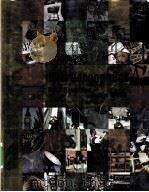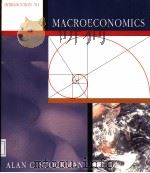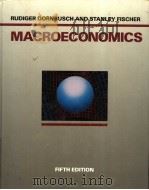《MACROECONOMICS》
| 作者 | 编者 |
|---|---|
| 出版 | 未查询到或未知 |
| 参考页数 | 514 |
| 出版时间 | 1992(求助前请核对) 目录预览 |
| ISBN号 | 0879015020 — 求助条款 |
| PDF编号 | 812648668(仅供预览,未存储实际文件) |
| 求助格式 | 扫描PDF(若分多册发行,每次仅能受理1册) |

Part One Introduction1
Chapter 1The Science of Macroeconomics3
1-1 Why Study Macroeconomics?3
CASE STUDY 1-1Presidential Elections and the Economy5
1-2 How Economists Think6
The Use of Economic Models6
FYI Using Functions to Express Relationships Among Variables9
The Role of Microeconomics in Macroeconomics10
Eclectic Macroeconomics11
Prices:Flexible versus Sticky11
1-3 How This Book Proceeds12
Chapter 2The Data of Macroeconomics15
2-1 Measuring the Value of Economic Activity:Gross National Product16
Income,Expenditure,and the Circular Flow16
FYIStocks and Flows18
Some Rules for Computing GNP19
The Treatment of Inventories19
Adding Apples and Oranges19
Intermediate Goods and Value-Added20
Housing Services and Other Imputations20
Real GNP versus Nominal GNP21
CASE STUDY 2-1Real GNP in the United States22
The GNP Deflator23
Other Statistics in the National Income Accounts24
The Components of Expenditure24
CASE STUDY 2-2GNP and Its Components25
Alternative Measures of Income26
CAS ESTUDY 2-3 The Seasonal Cycle and Seasonal Adjustment28
2-2 Measuring the Cost of Living:The Consumer Price Index29
The Price of a Basket of Goods29
The CPI versus the GNP Deflator30
CASESTUDY 2-4The Inflation of 1978-198132
2-3 Measuring Joblessness:The Unemployment Rate33
CASESTUDY 2-5 Unemployment,GNP,and Okun’s Law35
2-4 Conclusion:From Economic Statistics to Economic Models37
Part TwoThe Economy in the Long Run41
Chapter 3National Income:Its Production,Distribution,and Allocation42
3-1 The Production of Goods and Services44
The Factors of Production44
The Production Function45
The Fixed Supply of Goods and Services45
3-2 Distributing National Income to the Factors of Production46
Factor Prices46
The Problem Facing the Competitive Firm47
The Firm’s Demand for Factors48
The Marginal Product of Labor48
From the Marginal Product of Labor to Labor Demand49
The Marginal Product of Capital and Capital Demand51
The Division of National Income51
CASESTUDY 3-1The Black Death and Factor Prices53
CASESTUDY 3-2 The Senator,the Mathematician,and the Constancy of Factor Shares53
3-3 The Demand for Goods and Services56
Consumption56
CASESTUDY 3-3 The Consumption Function in U.S.Data58
Investment58
FYI What Is Investment?61
Government Purchases61
3-4 Equilibrium and the Interest Rate62
Equilibrium in the Market for Goods and Services:The Supply and Demand for the Economy’s Output63
Equilibrium in the Financial Markets:The Supply and Demand for Loanable Funds64
Changes in Saving:The Effects of Fiscal Policy65
An Increase in Government Purchases66
CASESTUDY 3-4Wars and Interest Rates in the United Kingdom,1730-192067
A Decrease in Taxes68
CASESTUDY 3-5 Fiscal Policy in the 1980s69
Changes in Investment Demand69
FYIThe Identification Problem72
3-5 Conclusion74
Chapter 4Economic Growth77
4-1 The Accumulation of Capital79
The Supply and Demand for Goods79
The Supply of Goods and the Production Function79
The Demand for Goods and the Consumption Function80
The Steady-State Level of Capital81
Approaching the Steady State84
Approaching the Steady State:A Numerical Example84
CASESTUDY 4-1Japanese and German Postwar Economic Growth86
Changes in the Saving Rate87
CASESTUDY 4-2Saving in Rich and Poor Countries88
4-2 The Golden Rule Level of Capital89
Comparing Steady States89
Comparing Steady States:A Numerical Example91
The Transition to the Golden Rule Steady State93
Starting With More Capital Than in the Golden Rule93
Starting With Less Capital Than in the Golden Rule94
4-3 Population Growth96
The Steady State With Population Growth96
The Effects of Population Growth98
CASESTUDY 4-3Population Growth in Rich and Poor Countries99
4-4 Technological Progress100
The Efficiency of Labor100
The Steady State With Technological Progress100
The Effects of Technological Progress101
CASESTUDY 4-4Steady-State Growth in the United States102
4-5 Saving,Growth,and Economic Policy103
Evaluating the Rate of Saving103
Changing the Rate of Saving104
CASESTUDY 4-5Social Security and Saving105
Encouraging Technological Progress105
CASESTUDY 4-6The Worldwide Slowdown in Economic Growth106
4-6 Conclusion:Beyond the Solow Model107
Appendix:Accounting for the Sources of Economic Growth112
Increases in the Factors of Production112
Increases in Capital112
Increases in Labor113
Increases in Capital and Labor113
Technological Progress114
The Sources of Growth in the United States116
Chapter 5Unemployment118
5-1 Job Loss,Job Finding,and the Natural Rate of Unemployment119
5-2 Job Search and Frictional Unemployment121
Public Policy and Frictional Unemployment122
CASESTUDY 5-1Interwar British Unemployment123
CASESTUDY 5-2 Unemployment Insurance and the Rate of Job Finding124
5-3 Real-Wage Rigidity and Wait Unemployment126
Minimum-Wage Laws127
CASESTUDY 5-3The Minimum Wage and the Working Poor128
Unions and Collective Bargaining128
CASESTUDY 5-4Unionization and Unemployment in the United States and Canada129
Efficiency Wages130
CASESTUDY 5-5Henry Ford’s $5 Workday131
5-4 Patterns of Unemployment132
The Duration of Unemployment132
Variation in the Unemployment Rate Across Demographic Groups133
The Upward Trend in Unemployment134
Transitions Into and Out of the Labor Force136
5-5 Conclusion137
Chapter 6Inflation140
6-1 What Is Money?141
The Functions of Money141
The Types of Money142
CASE STUDY 6-1Money in a POW Camp143
How Fiat Money Evolves144
CASE STUDY 6-2Money on the Island of Yap144
How the Quantity of Money Is Controlled145
How the Quantity of Money Is Measured146
6-2 The Quantity Theory of Money147
Transactions and the Quantity Equation147
From Transactions to Income148
The Money Demand Function and the Quantity Equation149
The Assumption of Constant Velocity150
Money,Prices,and Inflation150
FYI Products and Percentage Changes151
CASESTUDY 6-3 A Century of Money Growth and Inflation152
6-3 Seigniorage:The Revenue From Printing Money152
CASESTUDY 6-4Paying for the American Revolution154
6-4 Inflation and Interest Rates154
Two Interest Rates:Real and Nominal155
The Fisher Effect155
CASESTUDY 6-5Inflation and Nominal Interest Rates156
Two Real Interest Rates:Ex Ante and Ex Post157
CASESTUDY 6-6Nominal Interest Rates in the Nineteenth Century157
6-5 The Nominal Interest Rate and the Demand for Money158
The Cost of Holding Money158
Future Money and Current Prices159
How to Stop a Hyperinflation160
CASESTUDY 6-7Hyperinflation in Interwar Germany162
6-6 The Social Costs of Inflation164
Expected Inflation164
CASESTUDY 6-8Life During the Bolivian Hyperinflation166
Unexpected Inflation166
CASESTUDY 6-9The Free Silver Movement,the Election of 1896,and the Wizard of Oz168
The Level and Variability of Inflation169
6-7 Conclusion:The Classical Dichotomy169
Appendix:The Impact of Current and Future Money on the Price Level173
Chapter 7The Open Economy176
7-1 National Income Accounting in an Open Economy178
The Role of Net Exports178
GNP versus GDP180
The Capital Account and the Current Account181
7-2 The International Flows of Capital and Goods183
A Model of the Small Open Economy183
How Policies Influence the Capital Account and the Current Account185
Fiscal Policy at Home185
CASESTUDY 7-1The Twin Deficits of the 1980s186
Fiscal Policy Abroad188
Shifts in Investment Demand188
Evaluating Economic Policy189
7-3 Exchange Rates190
Nominal and Real Exchange Rates190
The Nominal Exchange Rate190
FYIHow Newspapers Report the Exchange Rate191
The Real Exchange Rate192
The Real Exchange Rate and Net Exports193
CASESTUDY 7-2 How Business Firms Respond to the Exchange Rate194
The Determinants of the Real Exchange Rate194
How Policies Influence the Real Exchange Rate196
Fiscal Policy at Home196
Fiscal Policy Abroad196
Shifts in Investment Demand197
The Effects of Trade Policies198
The Determinants of the Nominal Exchange Rate199
CASESTUDY 7-3 Inflation and Nominal Exchange Rates200
The Special Case of Purchasing-Power Parity201
CASESTUDY 7-4 The Big Mac Around the World203
7-4 Conclusion:The United States as a Large Open Economy204
Appendix:A Model of the Large Open Economy208
The Flow of Capital From Abroad208
The Elements of the Model209
The Effects of Economic Policies211
Part ThreeThe Economy in the Short Run213
Chapter 8Introduction to Economic Fluctuations214
8-1 How the Short Run and Long Run Differ215
CASESTUDY 8-1The Puzzle of Sticky Magazine Prices217
8-2 Aggregate Demand217
The Quantity Equation as Aggregate Demand218
Why the Aggregate Demand Curve Slopes Downward218
Shifts in the Aggregate Demand Curve219
8-3 Aggregate Supply220
The Long Run:The Vertical Aggregate Supply Curve221
The Short Run:The Horizontal Aggregate Supply Curve222
From the Short Run to the Long Run224
CASESTUDY 8-2Gold,Greenbacks,and the Contraction of the 1870s226
8-4 Stabilization Policy226
Shocks to Aggregate Demand227
CASESTUDY 8-3Velocity and the 1982 Recession228
Shocks to Aggregate Supply229
CASESTUDY 8-4 How OPEC Helped Cause Stagflation in the 1970s and Euphoria in the 1980s231
8-5 Conclusion233
Chapter 9Aggregate Demand Ⅰ235
9-1 The Goods Market and the IS Curve237
The Keynesian Cross237
Planned Expenditure237
The Economy in Equilibrium238
Fiscal Policy and the Multiplier:Government Purchases240
Fiscal Policy and the Multiplier:Taxes243
CASESTUDY 9-1 Kennedy,Keynes,and the 1964 Tax Cut244
The Interest Rate,Investment,and the IS Curve244
How Fiscal Policy Shifts the IS Curve246
A Loanable-Funds Interpretation of the IS Curve247
The Simple Algebra of the IS Curve248
9-2 The Money Market and the LM Curve250
The Theory of Liquidity Preference250
CASESTUDY 9-2 Paul Volcker,Tight Money,and Rising Interest Rates254
Income,Money Demand,and the LM Curve254
How Monetary Policy Shifts the LM Curve255
A Quantity-Equation Interpretation of the LM Curve257
The Simple Algebra of the LM Curve258
9-3 Conclusion:The Short-Run Equilibrium259
Chapter 10Aggregate Demand Ⅱ263
10-1 Explaining Fluctuations With the IS-LM Model264
Changes in Fiscal Policy264
Changes in Monetary Policy265
The Interaction Between Monetary and Fiscal Policy266
CASESTUDY 10-1 Policy Analysis With Macroeconometric Models268
Shocks in the IS-LM Model269
10-2 IS-LM as a Theory of Aggregate Demand270
From the IS-LM Model to the Aggregate Demand Curve270
The Simple Algebra of the Aggregate Demand Curve273
CASESTUDY 10-2 The Effectiveness of Monetary and Fiscal Policy274
The IS-LM Model in the Short Run and Long Run275
10-3 The Great Depression277
The Spending Hypothesis:Shocks to the IS Curve278
The Money Hypothesis:A Shock to the LM Curve280
The Money Hypothesis Again:The Effects of Falling Prices280
The Stabilizing Influences of Deflation281
The Destabilizing Influences of Deflation281
Could the Depression Happen Again?283
10-4 Conclusion283
Chapter 11Aggregate Supply287
11-1 Four Models of Aggregate Supply288
The Sticky-Wage Model288
The Worker-Misperception Model291
CASE STUDY 11-1The Cyclical Behavior of the Real Wage294
The Imperfect-Information Model295
The Sticky-Price Model296
CASESTUDY 11-2 International Differences in the Aggregate Supply Curve299
Summary and Implications300
11-2 Inflation,Unemployment,and the Phillips Curve302
From Aggregate Supply to Phillips Curve303
FYIThe History of the Phillips Curve304
Expectations and Inflation Inertia305
The Two Causes of Rising and Falling Inflation305
CASESTUDY 11-3 Inflation and Unemployment in the United States306
The Short-Run Tradeoff Between Inflation and Unemployment307
Disinflation and the Sacrifice Ratio308
Rational Expectations and Painless Disinflation309
CASESTUDY 11-4 The Cost of Paul Volcker’s Disinflation311
11-3 Recent Developments:New Keynesian Economics312
Small Menu Costs and Aggregate Demand Externalities313
The Staggering of Wages and Prices314
Recessions as Coordination Failure315
CASESTUDY 11-5 Experimental Evidence on Coordination Games316
Hysteresis and the Challenge to the Natural-Rate Hypothesis317
CASESTUDY 11-6 Unemployment in the United Kingdom in the 1980s318
11-4 Conclusion319
Chapter 12The Macroeconomic Policy Debate322
12-1 Should Policy Be Active or Passive?323
Lags in the Implementation and Effects of Policies324
CASESTUDY 12-1Profit Sharing as an Automatic Stabilizer325
The Difficult Job of Economic Forecasting326
CASESTUDY 12-2 Two Episodes in Economic Forecasting326
Ignorance,Expectations,and the Lucas Critique328
The Historical Record329
CASESTUDY 12-3 Is the Stabilization of the Economy a Figment of the Data?329
12-2 Should Policy Be Conducted by Rule or by Discretion?330
Distrust of Policymakers and the Political Process331
CASESTUDY 12-4 The Economy Under Republican and Democratic Presidents332
The Time Inconsistency of Discretionary Policy333
CASESTUDY 12-5Alexander Hamilton versus Time Inconsistency335
Rules for Monetary Policy336
Rules for Fiscal Policy337
CASESTUDY 12-6 The Debt-GNP Ratio Over Two Hundred Years338
12-3 Conclusion:Making Policy in an Uncertain World339
Appendix:Time Inconsistency and the Tradeoff Between Inflation and Unemployment342
Chapter 13The Open Economy in the Short Run345
13-1 The Mundell-Fleming Model346
Components of the Model346
The Model on a Y-r Graph347
The Model on a Y-e Graph349
13-2 The Small Open Economy Under Floating Exchange Rates352
Fiscal Policy352
Monetary Policy353
CASESTUDY 13-1 The Rise in the Dollar,1979-1982354
Trade Policy354
13-3 The Small Open Economy Under Fixed Exchange Rates356
How a Fixed Exchange-Rate System Works356
CASESTUDY 13-2 The International Gold Standard358
Fiscal Policy359
Monetary Policy359
Trade Policy361
Summary of the Mundell-Fleming Model362
13-4 Should Exchange Rates Be Floating or Fixed?362
CASESTUDY 13-3The European Monetary System364
13-5 A Concluding Reminder364
Appendix:A Short-Run Model of the Large Open Economy368
Fiscal Policy370
Monetary Policy370
A Rule of Thumb373
Chapter 14The Theory of Real Business Cycles374
14-1 A Review of the Economy Under Flexible Prices375
14-2 A Real-Business-Cycle Model377
Intertemporal Substitution and Labor Supply377
Real Aggregate Supply and Real Aggregate Demand378
Changes in Fiscal Policy379
Shocks to Technology380
14-3 The Debate Over Real-Business-Cycle Theory382
The Importance of Technology Shocks382
CASESTUDY 14-1The Solow Residual and the Business Cycle383
The Interpretation of Unemployment384
CASESTUDY 14-2Looking for Intertemporal Substitution385
The Neutrality of Money386
The Flexibility of Wages and Prices386
FYIWhat Is New Classical Economics?387
14-4 Conclusion388
Part FourMore on the Microeconomics Behind Macroeconomics391
Chapter 15Consumption392
15-1 John Maynard Keynes and the Consumption Function393
Keynes’s Conjectures393
The Early Empirical Successes395
Secular Stagnation,Simon Kuznets,and the Consumption Puzzle395
15-2 Irving Fisher and Intertemporal Choice397
The Intertemporal Budget Constraint397
Consumer Preferences400
Optimization401
How Changes in Income Affect Consumption402
How Changes in the Real Interest Rate Affect Consumption403
CASESTUDY 15-1Consumption and the Real Interest Rate404
Constraints on Borrowing405
CASESTUDY 15-2 The High Japanese Saving Rate408
15-3 Franco Modigliani and the Life-Cycle Hypothesis409
The Hypothesis409
Implications410
CASESTUDY 15-3The Consumption and Saving of the Elderly412
CASESTUDY 15-4 Saving and the Fear of Nuclear War412
15-4 Milton Friedman and the Permanent-Income Hypothesis414
The Hypothesis414
Implications415
CASESTUDY 15-5The 1964 Tax Cut and the 1968 Tax Surcharge416
Rational Expectations and Consumption417
CASESTUDY 15-6Do Consumers Anticipate Future Income?418
15-5 Conclusion419
Chapter 16Two Views of Government Debt423
16-1 The Traditional View of Government Debt424
16-2 The Ricardian View of Government Debt426
The Basic Logic of Ricardian Equivalence426
The Government Budget Constraint427
16-3 Consumers and Future Taxes429
Myopia430
Borrowing Constraints430
Future Generations432
CASESTUDY 16-1Why Do Parents Leave Bequests?433
16-4 Conclusion:Making a Choice433
Appendix:Is the Government Budget Deficit Correctly Measured?436
Measurement Problem No.1:Inflation436
Measurement Problem No.2:Capital Assets437
Measurement Problem No.3:Uncounted Liabilities438
Whither the Budget Deficit?439
Chapter 17Investment440
17-1 Business Fixed Investment441
The Rental Price of Capital442
The Cost of Capital443
The Determinants of Investment445
Taxes and Investment448
CASESTUDY 17-1The Swedish Investment Funds System449
The Stock Market and Tobin’s q450
Financing Constraints451
17-2 Residential Investment452
The Stock Equilibrium and the Flow Supply452
Changes in Housing Demand453
FYI What Price House Can You Afford?454
CASESTUDY 17-2 Taxes,Babies,and the Housing Boom of the 1970s455
17-3 Inventory Investment456
Reasons for Holding Inventories456
CASESTUDY 17-3Seasonal Fluctuations and Production Smoothing457
The Accelerator Model of Inventories458
CASESTUDY 17-4 The Evidence for the Accelerator Model458
Inventories and the Real Interest Rate459
17-4 Conclusion460
Chapter 18Money Supply and Money Demand463
18-1 Money Supply463
100-Percent-Reserve Banking464
Fractional-Reserve Banking465
A Model of the Money Supply467
The Three Instruments of Monetary Policy469
CASESTUDY 18-1Bank Failures and the Money Supply in the 1930s470
18-2 Money Demand472
Portfolio Theories of Money Demand472
CASESTUDY 18-2Currency and the Underground Economy474
Transactions Theories of Money Demand474
The Baumol-Tobin Model of Cash Management474
CASESTUDY 18-3Empirical Studies of Money Demand478
18-3 Conclusion:Microeconomic Models for Macroeconomics479
EpilogueWhat We Know,What We Don’t482
The Four Most Important Lessons of Macroeconomics482
Lesson No.1:In the long run,a country’s capacity to produce goods and services determines the standard of living of its citizens483
Lesson No.2:In the short run,aggregate demand influences the amount of goods and services that a country produces483
Lesson No.3:In the long run,the rate of money growth determines the rate of inflation,but it does not affect the rate of unemployment483
Lesson No.4:In the short run,policymakers who control monetary and fiscal policy face a tradeoff between inflation and unemployment484
The Four Most Important Unresolved Questions of Macroeconomics485
Question No.1:How should policymakers try to raise the economy’s natural rate of output?485
Question No.2:Should policymakers try to stabilize the economy?486
Question No.3:How costly is inflation,and how costly is reducing inflation?486
Question No.4:What are the consequences of government budget deficits?487
Glossary489
Index499
1992《MACROECONOMICS》由于是年代较久的资料都绝版了,几乎不可能购买到实物。如果大家为了学习确实需要,可向博主求助其电子版PDF文件。对合法合规的求助,我会当即受理并将下载地址发送给你。
高度相关资料
-
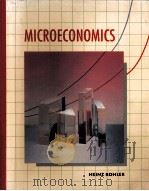
- MACROECONOMICS
- 1992 D.C.HEATH AND COMPANY
-

- MACROECONOMICS
- 1978
-

- MACROECONOMICS
- 1980
-
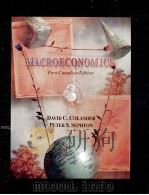
- Macroeconomics
- 1996 Times Mirror
-
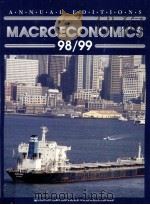
- Macroeconomics : 9899
- 1999 McGraw-Hill
-
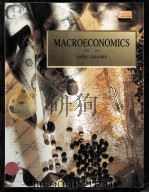
- MACROECONOMICS
- 1993 IRWIN
-
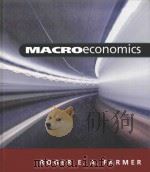
- MACROECONOMICS
- 1999 SOUTH-WESTERN COLLEGE PUBLISHING
-
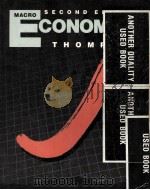
- Macroeconomics
- 1985 Addison-Wesley Publishing Company
-
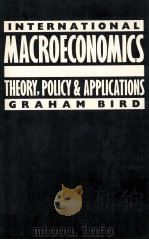
- INTERNATIONAL MACROECONOMICS
- 1987 MACMILLAN PRESS
-

- Macroeconomics
- 1986 Houghton Mifflin Company
提示:百度云已更名为百度网盘(百度盘),天翼云盘、微盘下载地址……暂未提供。➥ PDF文字可复制化或转WORD

